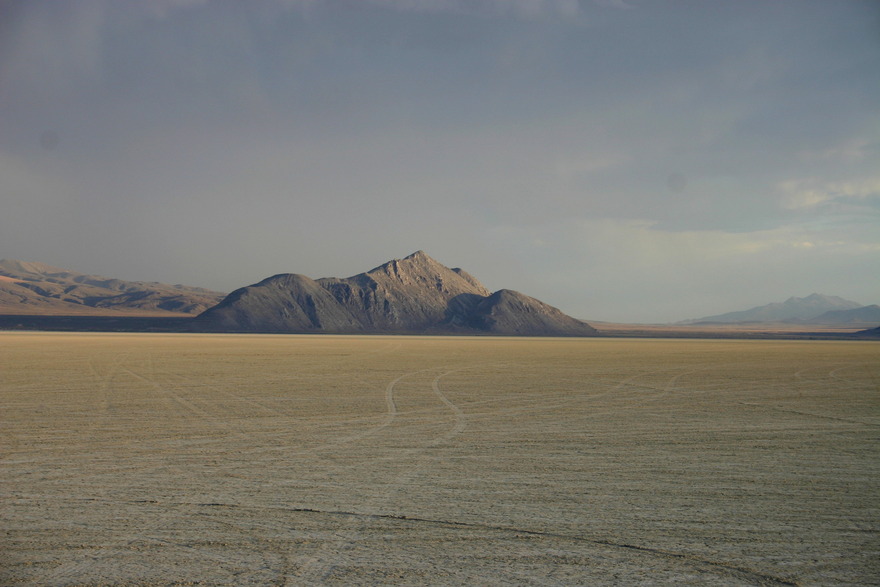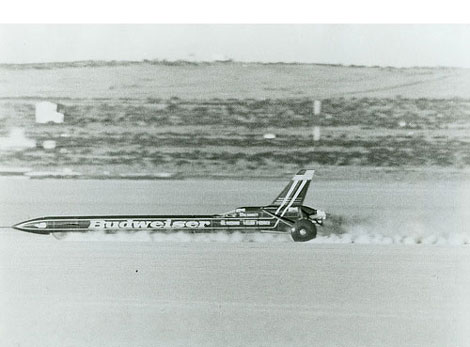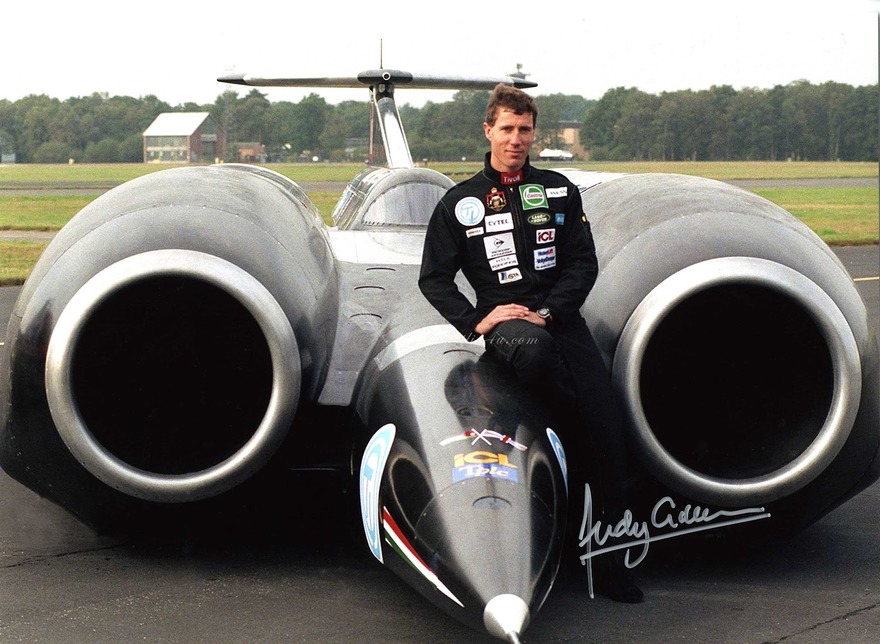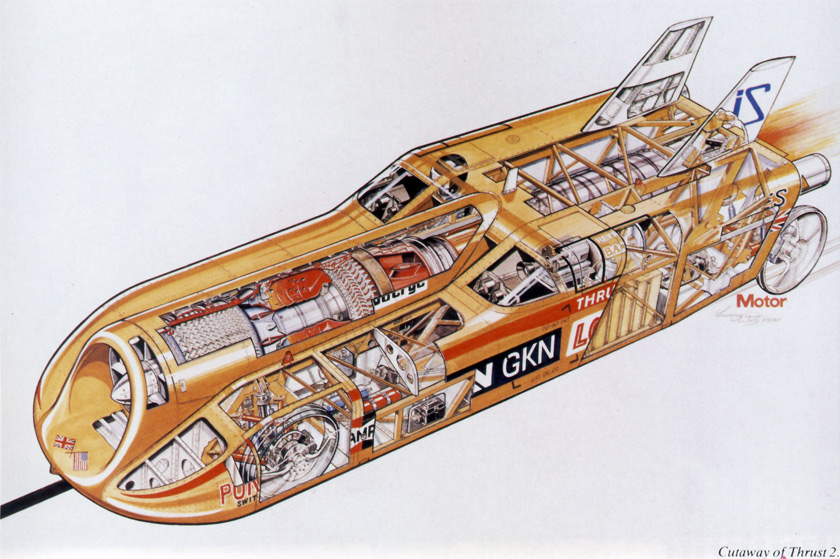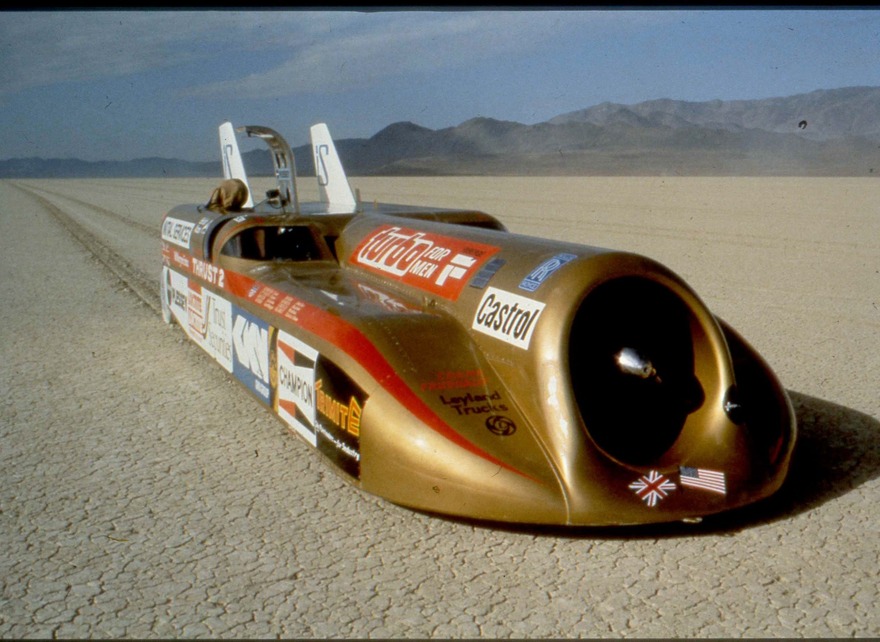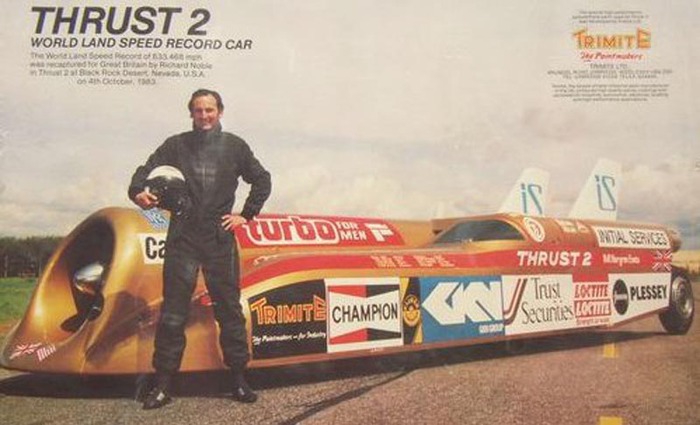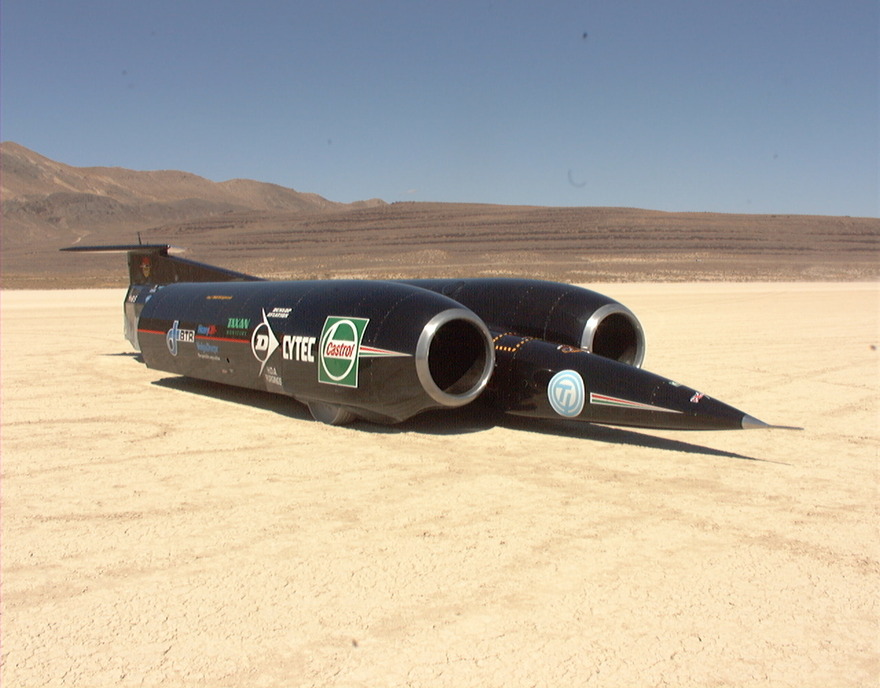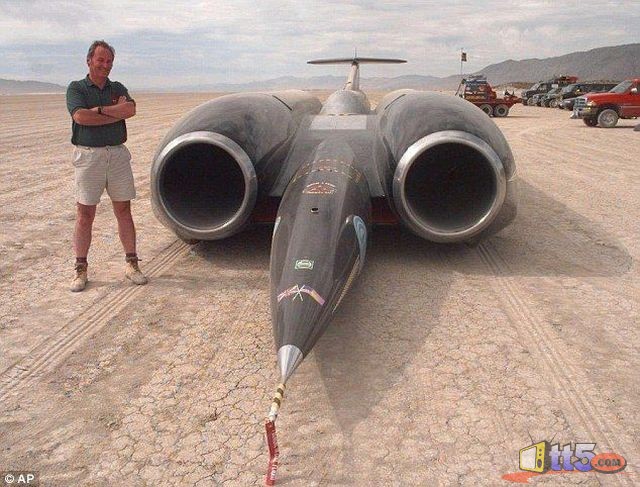The Black Rock Desert of Nevada is an amazing place. The earth there was trembling under the power of superfast wheels. The sky was vibrating from the roar of jet planes. Those who were watching it were almost jumping out of their skin. World’s most famous speed records were set here. This desert was crossed over by cars moving faster than planes.
Back in 1906, top speed achieved by a steam car was 196 km/h. Unthinkable numbers for a car of the previous century. A bit later, a humble WoggleBug demonstrated breakthrough power and velocity being able to accelerate to 241 km/h; however, a crash destroyed the car right after that. Ladies and gentlemen, please be more careful when trying to win over the title of a record-holder.
Today, in the 21st century, the fastest cars are able to sprint to 400 km/h, while some of the most talented masters can reach the speed of 600 km/h.
Yet still, to overtake a fighter plane?! Isn’t that a joke? Anyway, that could not be done by a steam car.
Less than 50 year later, the last mark on the speedometers leaped over to 200–250 km/h and Rolls-Royce managed to produce a jet-powered car. But before we tell you about it, let’s add something spicy to our dish of first world speed records.
The Budweiser Rocket was fitted with two jet engines (a liquid rocket engine, which used a mixture of oxygen and kerosene, and a solid-fuel engine borrowed from an air-to-air rocket). The three-wheel vehicle driven by an American stunt driver Stan Barrett was able to accelerate to 1,123 km/h down a dry lake bed at Edwards Air Force Base in California. Other sources claim the speed to be much higher — 1,190.337 km/h. This significant event took place on December 17, 1979; however, the record was never officially registered.
According to FIA regulations, in order to register a land speed record officially, one has to make two passes in opposite directions to negate the effects of wind and surface slope if any. Barrett made a one-way pass only. In addition to that, the radar was neither calibrated, nor tested. Moreover, the radar information was not generated using the vehicle directly but by an operator aiming a dish using a TV screen. Pretty far from being absolutely accurate, isn’t it?
Measuring instruments go off scale and produce more errors when the speed increases. Well, they could have claimed for worldwide recognition. So, this is how the talented Barrett and his cosmic result became just a story remembered by old Americans and former car enthusiasts.
Now it’s time for the main course. We’ll tell you about the best of the best (and official in addition to that).
Design engineer John Ackroyd did everything possible to come close to the result achieved by the legendary but not registered officially Barrett. Employed by Rolls-Rolls, which had been a rather promising company right from the start of its soaring career, Ackroyd strained every sinew. The vehicle he created was lucky to become the fastest jet-powered car of the 20th century.
So, on October 4th, 1983 in the Black Rock Desert of Nevada, Richard Noble, a driver from Great Britain, bettered the record by just 18.01 km/h. But what a result that was! It took Richard 9 years of hard work to accelerate the Thrust2 car fitted with a jet engine Avon-302 to this speed.
When setting the record, the car had to make two 1.6-km passes in opposite directions. And both of them had to be made within 60 minutes. Then the best performance out of two attempts was recorded. Noble was able to squeeze out a top speed of 1,047 km/h. The official fixed record was 1,019.467 km/h. The former world speed record for wheeled vehicle on land set in 1970 was dethroned.
It is worth mentioning that the Thrust2 was built by Rolls-Royce with the goal in mind to beat the record set by the Blue Flame driven by Gary Gabelich (we will definitely tell you about it later in one of the next stories of the “Records” column).
But the most amazing fact is that it took 14 years to break this record!
Professional aviator, Richard Noble, did not want to rest on his laurels. His other projects included the ARV Super2 light aircraft and Farnborough Aircraft, the first distributed travel air taxi aircraft. After that, the true gourmet of adrenaline cuisine and jet engines started developing the Thrust SSC. This time a Fighter Pilot in the Royal Air Force Andy Green had the honour of driving this ultra-fast vehicle.
At the same place, at the same hour, 14 years later, the Black Rock Desert of Nevada witnessed the Brit Andy Green accelerate to 1,227.986 km/h. He was able to do it with the help of twin Rolls Royce Spey turbofan jet engines delivering a combined power output of 110,000 hp. The 21-km track was covered in smoke and the new record flew off as a lightning strike from under the wheels of the Thrust SSC.
An interesting fact is that the SSC stands for “SuperSonic Car”. Perhaps, Noble was familiar with the Latin saying “Nomen est omen” or was he just self-confident enough? Anyway, on October 15, 1997, thanks to the masterpiece he had created, a man driving a car was able to exceed the speed of sound.
For those with a need for speed, that is not the limit. For dessert, we will supply you with several sweet rumours. It’s your choice, whether to believe them or not. They say Noble and Green are not going to rest on their laurels for long. Their ambitious plans are amazingly far-reaching — they are designing a new staggering construction, which, apparently, should be flying instead of driving. These two men are truly the Fastest People on Earth inside of the most powerful cars. Their only goal is to make the land speed record belong to the British crown for as long as possible. The most important thing is to register all these records on time. Otherwise, later you will not be able to prove that you managed to break the speed of both the sound and the wind.
Now the record-holding wonder car is on display in the Coventry Transport Museum. However, rumours are in the air that the world’s fastest car will be sold quite soon. As they say, due to museum’s financial situation. It is a major blow for the museum to lose one of Great Britain’s legends. The Thrust SSC might fall into the hands of any collector ready to pay £800,000 as the British collectors of rare cars and directors of museums do not show any desire to acquire the “national treasure”. Richard Noble is also silent. His wife Sally once said: “If it were possible, I would have bought this car myself and put it in front of our house”.
So, these are the stories circulating around the fastest jet-powered cars. Our next story in the “Records” column will tell about the fastest driver, who set world speed record on the dry lake bed in the deserts of Australia.

